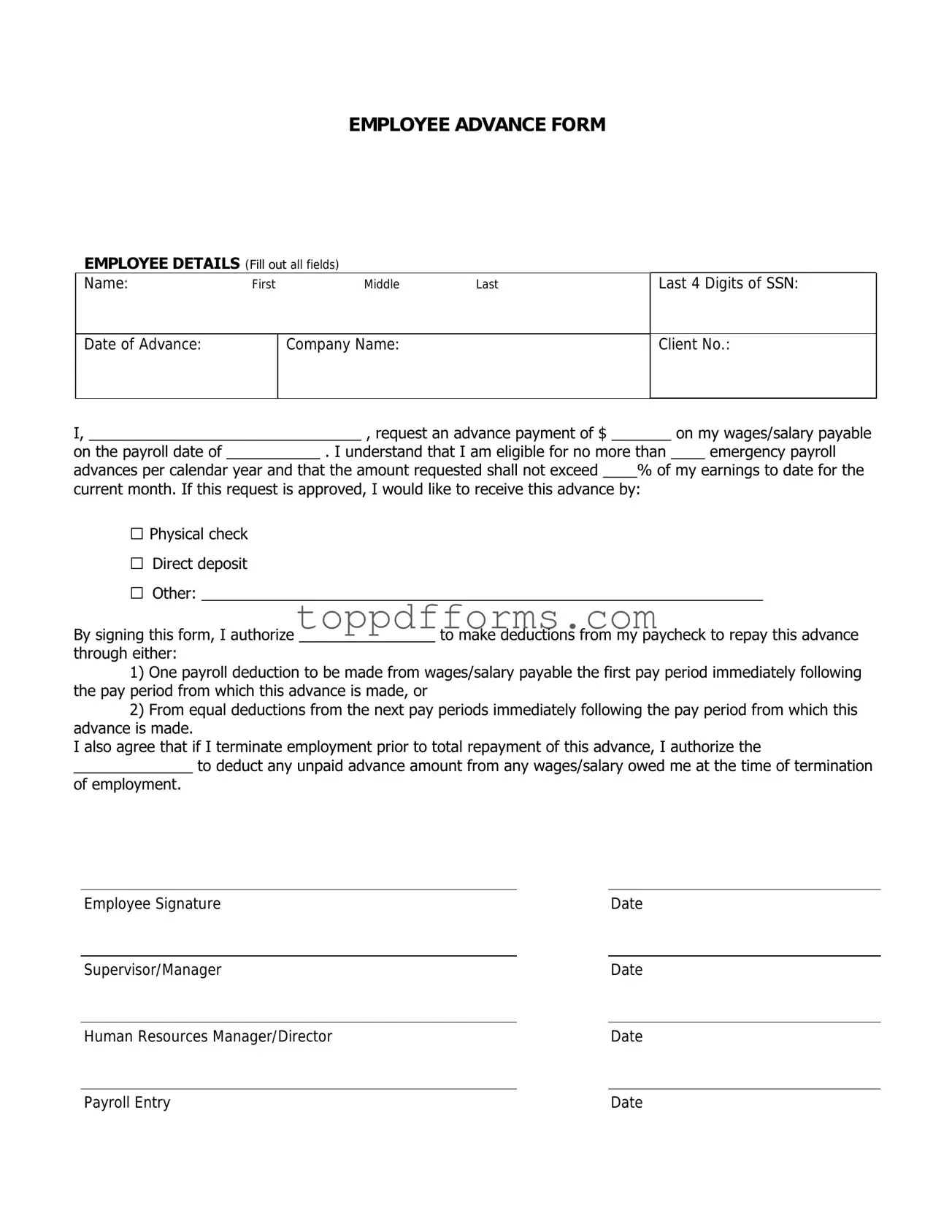What is the Employee Advance form?
The Employee Advance form is a document that allows employees to request an advance on their salary or wages. This form is used to ensure that the request is properly documented and processed by the employer.
Who is eligible to request an advance?
Generally, all employees who have completed their probationary period are eligible to request an advance. However, specific eligibility criteria may vary by company policy, so it is important to check with your HR department for details.
How do I fill out the Employee Advance form?
To fill out the form, provide your personal information, including your name, employee ID, and department. Clearly state the amount you are requesting and the reason for the advance. Ensure that you sign and date the form before submitting it.
What information do I need to provide?
You will need to provide your name, employee ID, department, the amount requested, and a brief explanation of why you need the advance. Be honest and concise in your explanation to facilitate the approval process.
How long does it take to process the request?
The processing time can vary depending on the company's policies and the volume of requests. Typically, you can expect a response within a week. However, urgent requests may be expedited if necessary.
Will I be required to pay back the advance?
Yes, advances are generally considered loans. You will need to repay the amount through payroll deductions over a specified period. The repayment terms will be outlined in the approval notification you receive.
What happens if my request is denied?
If your request is denied, you will receive a notification explaining the reason for the denial. You may have the option to appeal the decision or submit a new request with additional information.
Can I submit the form electronically?
Many companies now allow electronic submissions of the Employee Advance form. Check with your HR department for specific instructions on how to submit your request electronically, if available.
Who do I contact if I have questions about the form?
If you have questions regarding the Employee Advance form or the process, reach out to your HR representative. They can provide guidance and clarify any doubts you may have.
